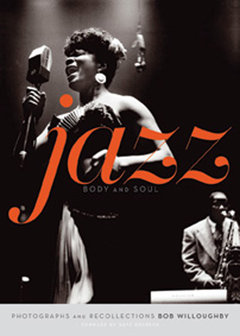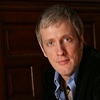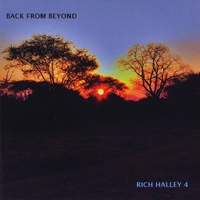Home » Jazz Articles » Book Review » Bob Willoughby: Jazz - Body and Soul
Bob Willoughby: Jazz - Body and Soul
 Jazz: Body and Soul
Jazz: Body and SoulBob Willoughby
176 pages, hardback, slipcase
ISBN: 978 1 901268 58 4
Evans Mitchell Books
2012
To the wider world, Bob Willoughby is the Los Angeles photographer who took a raft of iconic photographs of movie stars such as Audrey Hepburn, Elizabeth Taylor and Marilyn Monroe from the mid-1950s through the 1970s. During the earlier part of this period, as the first-call photographer for studios wishing to document the making of a movie, he was, according to Popular Photography magazine, "the man who virtually invented the photojournalistic motion picture still."
But before he hit paydirt in the movie business, Willoughby (1927-2009), an avid jazz fan, spent much of his time photographing jazz musicians performing in and around Los Angeles: onstage, backstage, in their dressing rooms—and not forgetting their audiences. He was certainly one of the men who invented the photojournalistic jazz still. Willoughby's East Coast contemporary, Francis Wolff's preferred working style was to merge into the background, becoming an unseen observer. Willoughby did that too, but was also adept at engaging with his subjects, encouraging them to give something more of themselves to the photograph.
A collection of Willoughby's jazz photography, Jazz in L.A., was published in Germany by Nieswand Verlag in 1990. The German Art Directors Club gave it the Most Beautiful Book award of the year. If that award is still alive, then Jazz: Body and Soul, another luminously photographed, sumptuously designed collection, is surely a contender in 2012.
Willoughby's gift for reportage shines throughout this new book, and nowhere more brilliantly than in a 15-page chapter of photographs taken during a midnight performance by the tenor saxophonist Big Jay McNeely at the Olympic Auditorium (an L.A. fight arena) in 1951. In his commentary—the photographs in Jazz: Body and Soul are accompanied by Willoughby's recollections of his subjects and the circumstances in which he photographed them—Willoughby records the audience's unfettered emotional response to McNeely's honking and squealing. Having set the scene, and noting that normally he favored less fevered jazz, Willoughby writes:
"I was so caught up in the excitement that I just climbed right up on the stage without thinking. Big Jay was strutting up and down playing riff after riff on his sax, honking his way through 45 minutes of pulsating, explosive rhythm. He knelt, he sat, he laid flat on his back, playing into the faces of orgasmic girls. He appeared away on some kind of space flight, perspiring until his clothes were soaked. He tore off his wet jacket without even missing a beat. And the near-hysterical crowd just kept screaming, 'Go! Go! Go!'" Willoughby's photographs capture the excitement as successfully as his prose.
Elsewhere in Jazz: Body and Soul there are extended chapters featuring baritone saxophonist Gerry Mulligan and trumpeter Chet Baker, and pianist Dave Brubeck and alto saxophonist Paul Desmond. There are superb shots of singer Peggy Lee in a Lake Tahoe rehearsal studio in 1953, and much else besides.
Willoughby's professional transition from jazz clubs to film sets was marked by two mid-1950s movie commissions, for The Benny Goodman Story (1955) and High Society (1956). The book includes work from both, with great shots of clarinetist Benny Goodman and tenor saxophonist Stan Getz recording the soundtrack for the Goodman movie, and of trumpeter Louis Armstrong entertaining Grace Kelly and Bing Crosby during a break in filming High Society.
By the 1990s, Willoughby had long retired from jazz photography and was living in the south of France. But, following the publication of Jazz in L.A., he was contacted by the organizer of the Stuttgart Jazz Gipfel '92, inviting him to document the festival. With some trepidation—"I hadn't photographed jazz musicians for so long, I couldn't even think when the last time was!"—Willoughby agreed, and Jazz: Body and Soul concludes with a 36-page chapter which includes memorable images of Gerry Mulligan, guitarist John McLaughlin, pianist Marcus Roberts, trombonist Ronald Westray, guitarist Pat Metheny, and saxophonists Jan Garbarek, Charlie Mariano, Ornette Coleman and Lee Konitz. Forty years on, still a massive jazz fan, Willoughby's touch remained sure.
Jazz: Body and Soul opens with an affectionate essay by pianist Dave Brubeck, who relates how Willoughby came to take the cover shot of the Brubeck quartet's debut album. A beautiful artifact, the book evokes, in words and pictures, the Los Angeles jazz scene of the early-to-mid 1950s as vividly as Francis Wolff's work in New York nails East Coast hard bop.
Tags
Book Reviews
Chris May
United States
Marilyn Monroe
Big Jay McNeely
Gerry Mulligan
Chet Baker
Dave Brubeck
Paul Desmond
Peggy Lee
Benny Goodman
Stan Getz
Louis Armstrong
john mclaughlin
Marcus Roberts
pat metheny
Jan Garbarek
Charlie Mariano
Ornette Coleman
Lee Konitz
PREVIOUS / NEXT
Support All About Jazz
 All About Jazz has been a pillar of jazz since 1995, championing it as an art form and, more importantly, supporting the musicians who make it. Our enduring commitment has made "AAJ" one of the most culturally important websites of its kind, read by hundreds of thousands of fans, musicians and industry figures every month.
All About Jazz has been a pillar of jazz since 1995, championing it as an art form and, more importantly, supporting the musicians who make it. Our enduring commitment has made "AAJ" one of the most culturally important websites of its kind, read by hundreds of thousands of fans, musicians and industry figures every month.





















